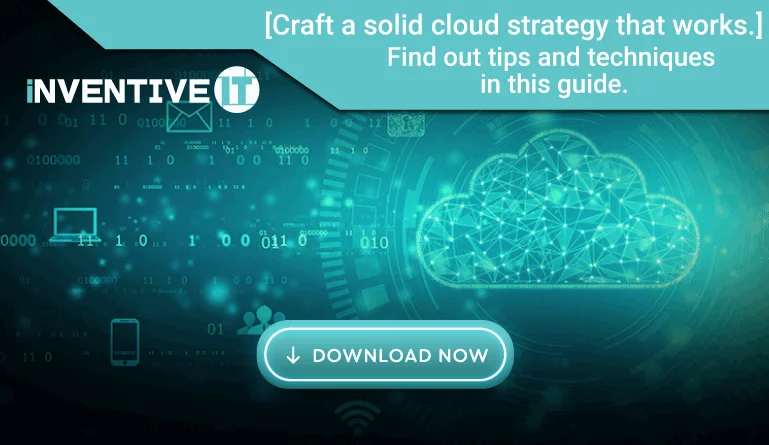Cloud user access management software is a type of Identity and Access Management (IAM) software, which is sometimes also called user access management (UAM). A cloud management system creates the secured authorized access to use cloud storage management software and to run the software as a service (SaaS) applications.
The role of cloud user access management software is to ensure that authorized users have appropriate access to the IT resources of an enterprise. Additionally, this security management software must prevent unauthorized users from having access to the system or parts of the system that they are not authorized to use.
The Evolution of IAM to Cloud Security Management
IAM allows the IT system administrators to give authorized permission to users on a network. This authorization can be given by the administrators to groups, work types, program APIs, and individuals. The permissions may be fine-tuned according to access needs and necessary security limitations. Permissions may be granted from full access down to being limited to a specific file.
IAM was the solution for most on-premises (on-prem) enterprise networks up until around the year 2000. These systems were running on Windows® and were managed by Microsoft’s ActiveDirectory®.
Starting in 2000, networks running on other operating systems such as iOS® (for Macs) and open-source Linux® also became popular. Additionally, certain web-based SaaS offerings, such as Salesforce® and GoogleApps (now renamed G Suite™) became popular. Moreover, many services moved to the cloud, such as those found on the AWS® cloud-based services.
Network administrators then had to manage these disparate systems: 1) some that might still be on-prem running on Windows®; 2) some that used non-Windows® operating systems; 3) others that were web-based, and; 4) still others that were in the cloud.
With that mix of systems, Microsoft’s ActiveDirectory® was not capable of managing IAM needs effectively. The solution to this problem is cloud security management through cloud user access management software.
The Benefits of Cloud User Access Management Software
Cloud user access management software can manage any on-prem networks running on Windows®. It easily handles those users’ needs and on-prem IT resources. It also handles any other types of networks running other operating systems and those located elsewhere. It manages access management SaaS and cloud-based services as well.
Network administrators manage all these networks by using a single interface for an identity management platform running on the cloud. A cloud-based service that performs this function is known as a directory as a service (DaaS).
Directory as a Service
DaaS is a core identity provider that allows administrators to manage multiple users across a range of devices with different operating systems. They may be using many types of applications and are in diverse geographical areas.
DaaS provides the ability for administrators to manage the network independent of the platform used, providers, protocols, or global location without needing to have anything on-premises unless that is desired for other reasons.
DaaS has the following features:
- Network administrators centralize the management of user access to the network.
- Users are then able to access all the IT resources that they need using a single core identity.
- On-prem IT infrastructure, used for the management of user identities, can be eliminated.
Integrated Security and Cloud Management Software
DaaS is a focused solution for cloud-based IAM, solving that specific need for user identity management. Other cloud software alternatives provide user access management as part of a bundled cloud-services offering that is called infrastructure as a service (IaaS).
FinancesOnline gave their choices for the top 20 best cloud management software solutions, which are:
- Symantec Web and Cloud Security
- ManageEngine Applications Manager
- AppFormix
- ServiceNow Cloud Management
- OpenStack
- Centrify Application Services
- Cloud Lifecycle Management
- MultCloud
- Bitium
- Zoolz Intelligent Cloud
- RightScale Cloud Management
- Microsoft Azure Cost Management
- CloudHealth
- Cloudcraft
- Morpheus
- Cloudify
- IntelligentContract
Security is a top priority in some of these systems. Of the top 20 choices, here are the ones that have more focus on cloud user access management and security:
1. Symantec Web and Cloud Security
The Symantec Web and Cloud Security system is the most comprehensive for cybersecurity. It provides a full solution for security, legal compliance, and cyber threat prevention. It filters network traffic and allows user control with its cloud-based Web Security Service. The integrated compliance services provide unified enterprise governance, information security, and protection.
Symantec Web and Cloud Security may be deployed in an on-prem network, as a cloud service, or as a hybrid combination. It works well across all platforms and protocols including social media, mobile networks, and web-based interfaces.
Security policy control is flexible according to the needs of a business. This system benefits from being part of the world’s largest civilian cyber threat assessment network that can quickly detect and block multi-phased, multi-vector cyber-attacks.
2. OpenStack
OpenStack is an open-source cloud management software solution that is constantly being improved by software developers from more than 1,000 companies located in over 60 countries. This system follows the best practices for privacy, compliance, and security.
3. Centrify Application Service
Centrify Application Services has a strong focus on security with its protection against compromised user credentials. This is the most common cyber-attack vulnerability used as an exploit in data breaches. Access to thousands of applications is secured by reducing the risk caused by using passwords. Users, who are authorized to have access to on-prem, mobile, and cloud-based services, sign on with a unique username and password that requires multi-factor authentication to access the applications.
4. Bitium
Bitium offers password management with a single sign-on that improves access and identity verification for companies using cloud services. It is a cloud-based identity and access management solution that can handle thousands of applications, which can be securely accessed from any mobile device or online location.
Robust cloud user access management is critically needed for the secure use of cloud-based resources. This cloud user access management software is suitable for companies that have many users (especially mobile users) and those that must prove compliance with regulations.
A cloud-based user access management system is the solution network administrators need to implement to create a centralized, access and identification, the control point for on-premise networks, web-based services, mobile apps, and to secure the use of thousands of cloud applications.






